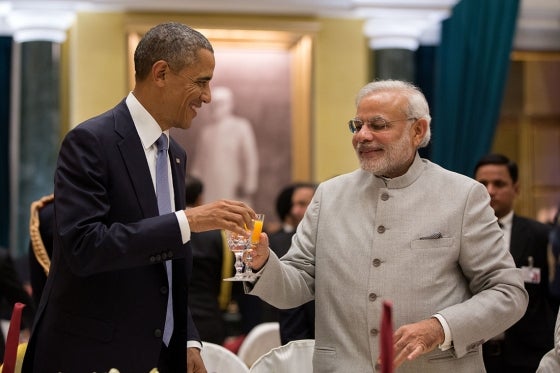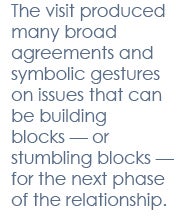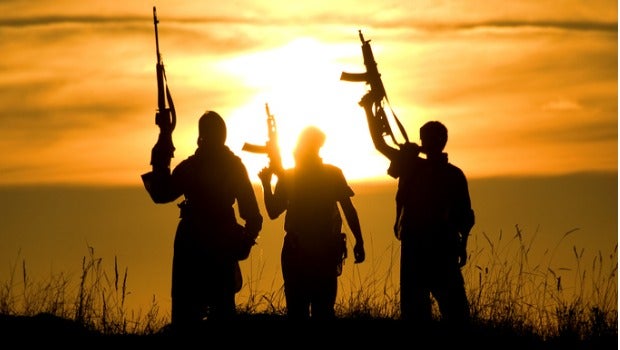
The US-India relationship is coming off an impressive week. President Barack Obama recently departed India after a three-day trip that included two milestones: he became the first American president to visit India twice in his term and the first to be the chief guest at India’s Republic Day parade. Many commented on the warm, personal relationship that seems to be developing between Prime Minister Narendra Modi and Obama, but the truth is the relationship is much deeper than just two individuals. As Obama said at the US-India Business Council Summit, “the fortunes of the United States and the fortunes of India are inextricably linked.”

Indeed, the shared values between India and the United States should inspire both countries to build even further. The election of Modi constituted the largest democratic exercise in human history. Moreover, in the India-US Delhi Declaration of Friendship released during the visit, the two countries outlined values they share on fundamental freedoms and a rule-based global order. Importantly, the Declaration agreed to elevate the strategic partnership between the two countries, focusing thus not on what has been accomplished, but what more can be done.
The visit itself produced many broad agreements and symbolic gestures on issues that can be building blocks — or stumbling blocks — for the next phase of the relationship. As Aspen Strategy Group co-chairman Joe Nye said at a recent forum ASG hosted in India: “We are fated to be close allies.” Even though an alliance may never be formalized, in addition to our common values, we share similar strategic opportunities and challenges. There are three areas in particular that represent opportunity in the relationship, which were addressed during Obama’s recent visit.
Combatting Climate Change
One of the targeted outcomes of the visit was to agree on a strong joint statement that can inject the momentum required for India and the US to cooperate at the global conference on climate change in Paris at the end of this year. The agreement released on Sunday is a positive first step. It includes India’s commitment to establish a goal for “the share of renewable energy in electricity generation […] to increase India’s solar capacity to 100 GW by 2022” and a deepening of the US pledge to accelerate private sector financing and investment for India to achieve clean energy.
Implementing the Civil Nuclear Agreement
It seems India and the US may finally be on the cusp of implementing this agreement, which was made eight years ago. Though it remains to be seen which US companies will take advantage of the opportunity to invest in India, and what will be required in India to make this agreement a reality, it adds momentum to an area where cooperation had been frozen. The agreement also addresses climate change goals by expanding India’s capacity to produce other forms of energy and opens up opportunities for economic growth, which has been at the center of Modi’s domestic agenda.
Trade and Economics
And finally, the foundation of the relationship – trade and economics. Though an area of great promise, it is often measured by how much further there is to go. As Council on Foreign Relations Senior Fellow Alyssa Ayres pointed out in a recent article in Fortune, trade between the two countries has plateaued at about $100 billion over the last two years. This pales in comparison to the US-China trade in 2012 of $579 billion. That’s why the vision that Obama and Modi set back in October to have a five-fold increase in Indo-US trade to $500 billion is so important.
While the above are common areas of opportunity, they also have the potential to be spoilers. The civil-nuclear energy deal has languished since being signed in 2008, and India has sometimes been labeled as a difficult partner in both trade and climate change talks at multilateral fora. But that is why visits like the one earlier this week are so important. They call attention to the relationship, highlight the work that has been done, and give new momentum to the bureaucracies to move forward on outstanding issues.
It is clear that Modi is determined to set a new course, both for India’s own future and for its relationship with the United States. Now comes the hard work of implementing these grand visions by way of seeing the nuclear deal deliver on its promise, achieve and expand on the targets laid out in the climate cooperation statement, and mobilize both countries’ private and public sectors to increase trade fivefold.
Nonetheless, there is much to be positive about. A strong US-India relationship, unlike other bilateral relationships, has enjoyed bipartisan agreement, regardless of the party in power in both countries. Though there is much work to be done, perhaps one of its defining features is the feeling of mutual aspiration and optimism — another set of values both countries share — that, while perhaps not enough by itself to implement the breakthroughs, certainly bode well for the future of this strategic partnership.
Jonathon Price is deputy director of the Aspen Strategy Group.

